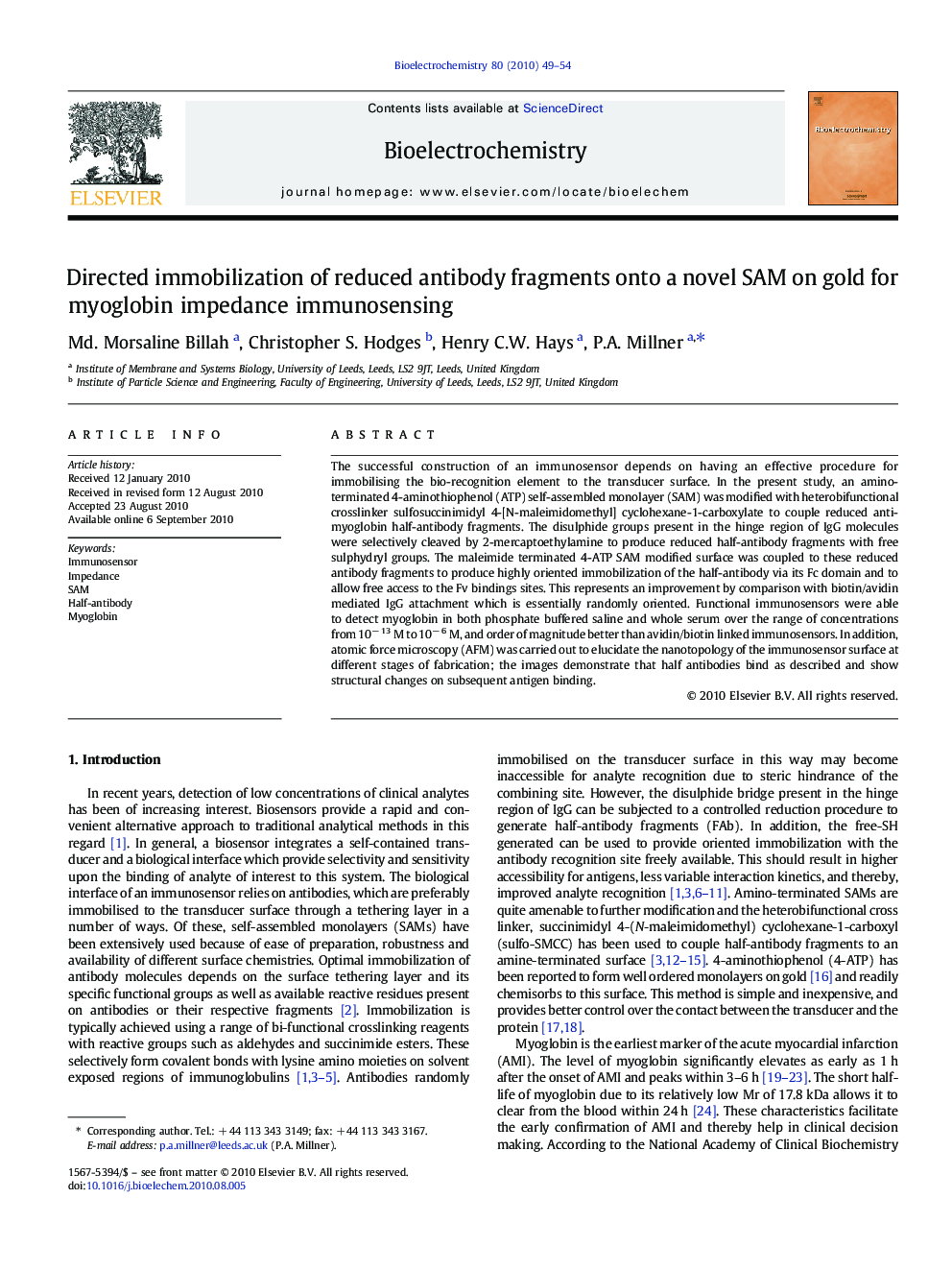| کد مقاله | کد نشریه | سال انتشار | مقاله انگلیسی | نسخه تمام متن |
|---|---|---|---|---|
| 1274844 | 972626 | 2010 | 6 صفحه PDF | دانلود رایگان |

The successful construction of an immunosensor depends on having an effective procedure for immobilising the bio-recognition element to the transducer surface. In the present study, an amino-terminated 4-aminothiophenol (ATP) self-assembled monolayer (SAM) was modified with heterobifunctional crosslinker sulfosuccinimidyl 4-[N-maleimidomethyl] cyclohexane-1-carboxylate to couple reduced anti-myoglobin half-antibody fragments. The disulphide groups present in the hinge region of IgG molecules were selectively cleaved by 2-mercaptoethylamine to produce reduced half-antibody fragments with free sulphydryl groups. The maleimide terminated 4-ATP SAM modified surface was coupled to these reduced antibody fragments to produce highly oriented immobilization of the half-antibody via its Fc domain and to allow free access to the Fv bindings sites. This represents an improvement by comparison with biotin/avidin mediated IgG attachment which is essentially randomly oriented. Functional immunosensors were able to detect myoglobin in both phosphate buffered saline and whole serum over the range of concentrations from 10− 13 M to 10− 6 M, and order of magnitude better than avidin/biotin linked immunosensors. In addition, atomic force microscopy (AFM) was carried out to elucidate the nanotopology of the immunosensor surface at different stages of fabrication; the images demonstrate that half antibodies bind as described and show structural changes on subsequent antigen binding.
Journal: Bioelectrochemistry - Volume 80, Issue 1, November 2010, Pages 49–54